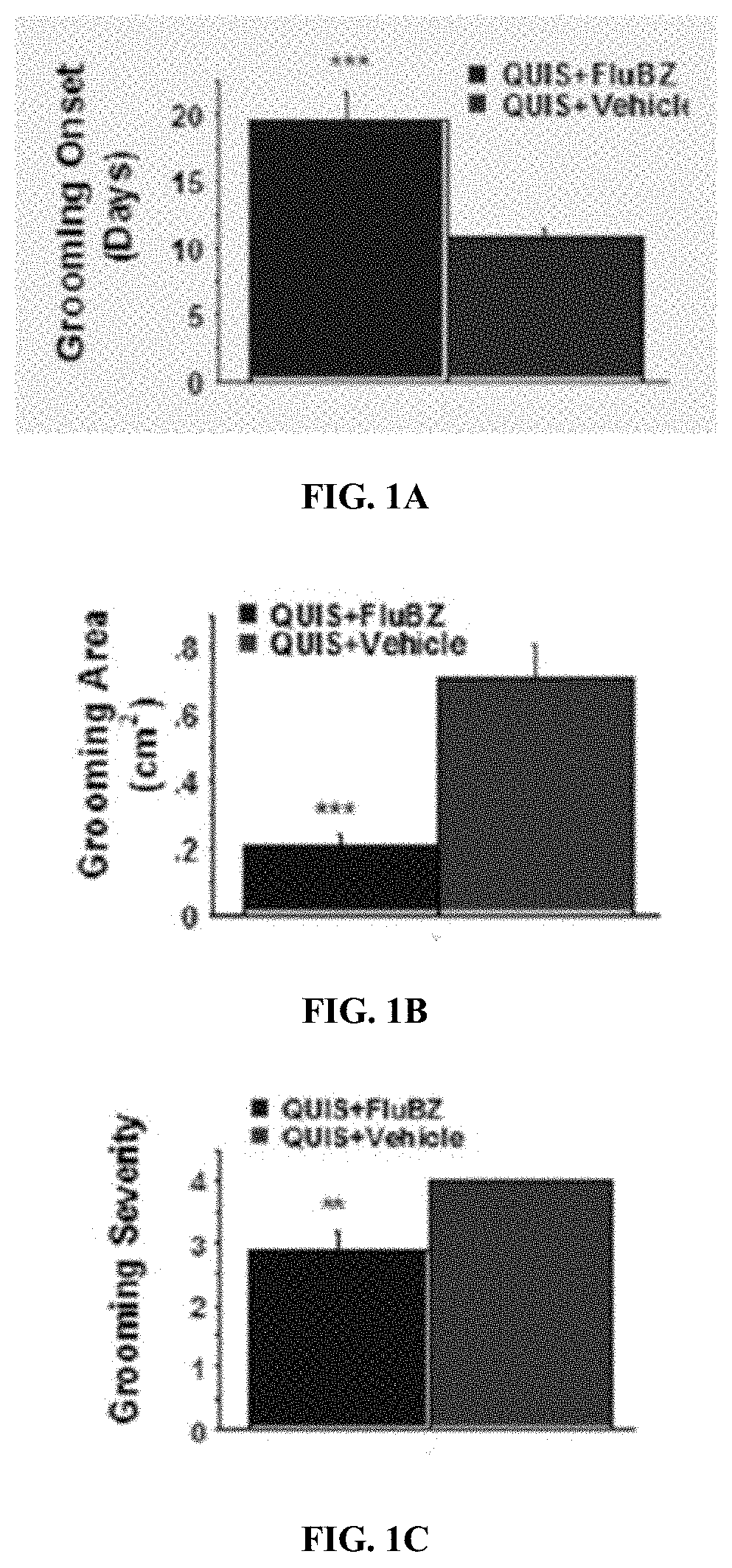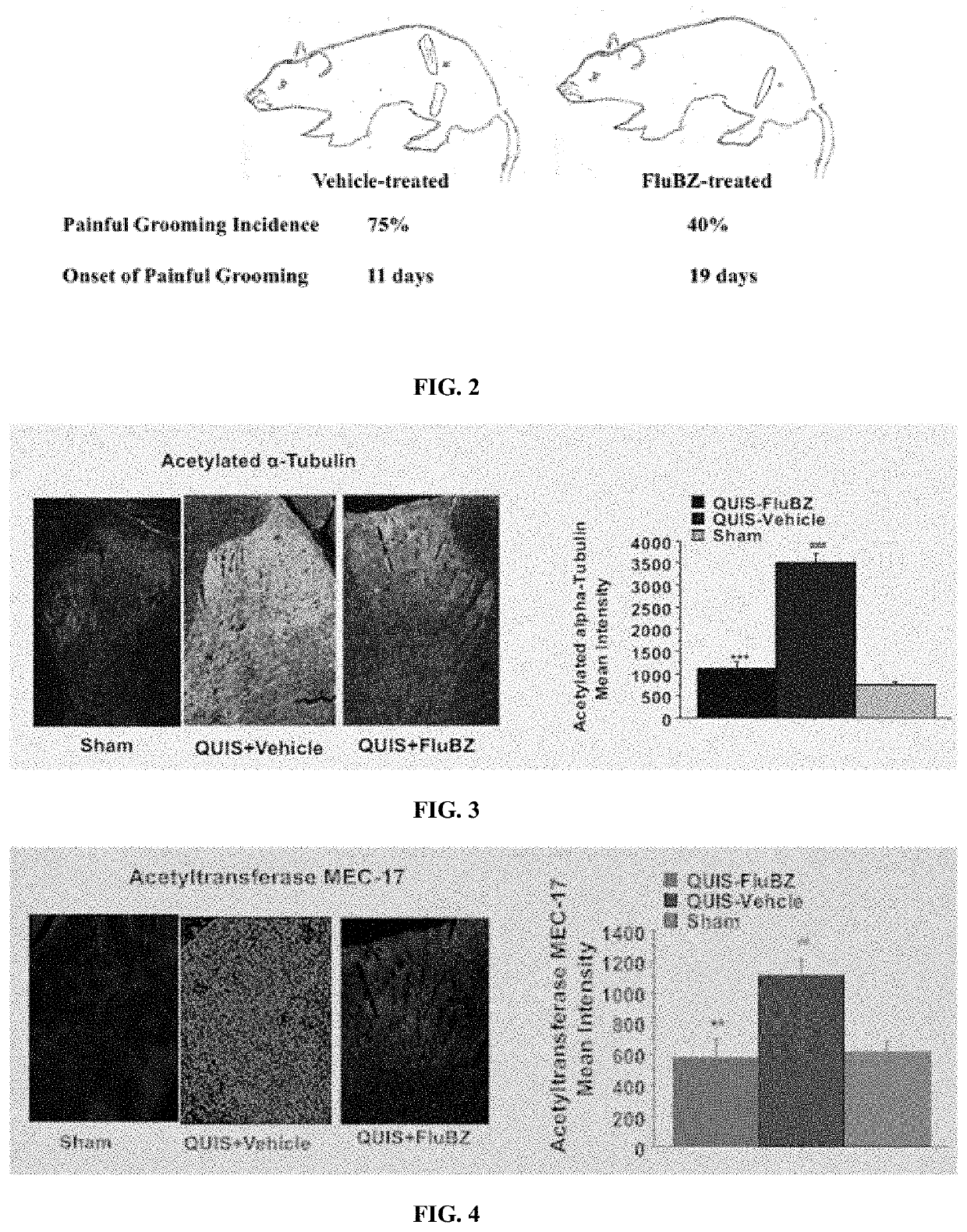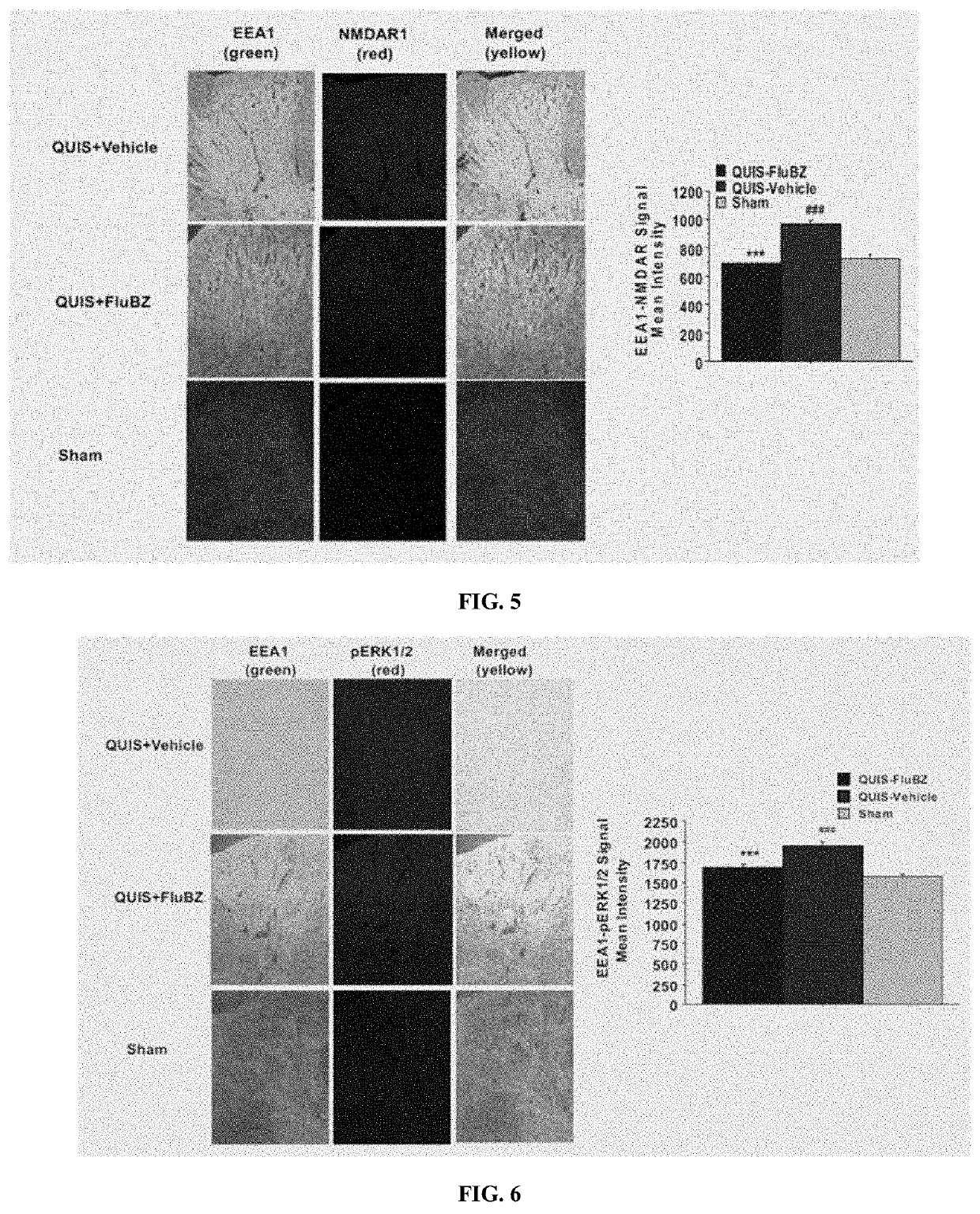Attenuation of neuropathic pain after spinal cord injury
a technology of neuropathic pain and spinal cord injury, which is applied in the field of flubendazole, can solve the problems of significant delay in the onset of painful grooming, the anti- nociceptive effect of microtubule destabilization in neuropathic pain that has not been previously investigated, and the size of the painful grooming area is reduced, so as to enhance neuronal excitability and endosomal signal transport, enhance the proliferation of mitotic cells and eea1 transpor
- Summary
- Abstract
- Description
- Claims
- Application Information
AI Technical Summary
Benefits of technology
Problems solved by technology
Method used
Image
Examples
examples
Materials & Methods
Animals
[0045]Male Sprague-Dawley (SD) adult rats at 3 months, weighing 220-250 g, were used (Charles River, Indianapolis, Ind.). Rats were kept under standard housing conditions (12:12 light and dark cycle) with food and water ad libitum for at least 1 week following arrival in an enclosed, pathogen-free animal facility. All experimental procedures were approved and carried out in accordance with the Guidelines of the US National Institutes of Health and Institutional Animal Care and Use Committee (IACUC) of the University of Kentucky.
Chemicals
[0046]Flubendazole (FluBZ), quisqualic acid (QUIS), fish gelatin, and anti-acetylated α-Tubulin antibody (T7451, mouse monoclonal) were purchased from Sigma-Aldrich (St. Louis, Mo.). Anti-phospho-p44 / 42 MAPK (pERK1 / 2) antibody (#9101s, rabbit polyclonal) and anti-cyclin B1 antibody (#4138, rabbit polyclonal) were purchased from Cell Signaling Technology, Inc. (Danvers, Mass.). Anti-acetyltransferase ATAT1 / MEC-17 antibody (ab...
PUM
| Property | Measurement | Unit |
|---|---|---|
| depth | aaaaa | aaaaa |
| depth | aaaaa | aaaaa |
| volume | aaaaa | aaaaa |
Abstract
Description
Claims
Application Information
 Login to View More
Login to View More - R&D
- Intellectual Property
- Life Sciences
- Materials
- Tech Scout
- Unparalleled Data Quality
- Higher Quality Content
- 60% Fewer Hallucinations
Browse by: Latest US Patents, China's latest patents, Technical Efficacy Thesaurus, Application Domain, Technology Topic, Popular Technical Reports.
© 2025 PatSnap. All rights reserved.Legal|Privacy policy|Modern Slavery Act Transparency Statement|Sitemap|About US| Contact US: help@patsnap.com



